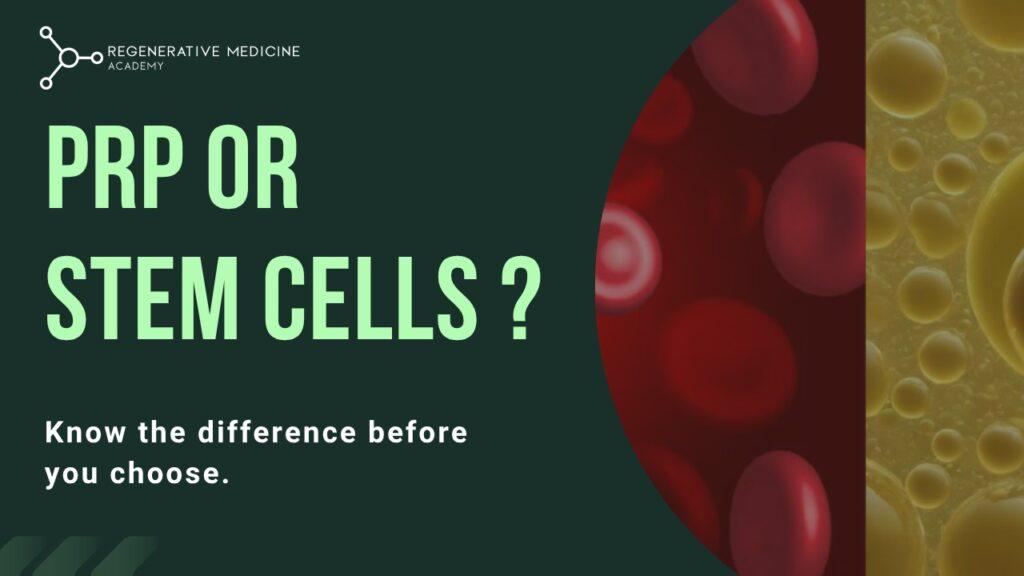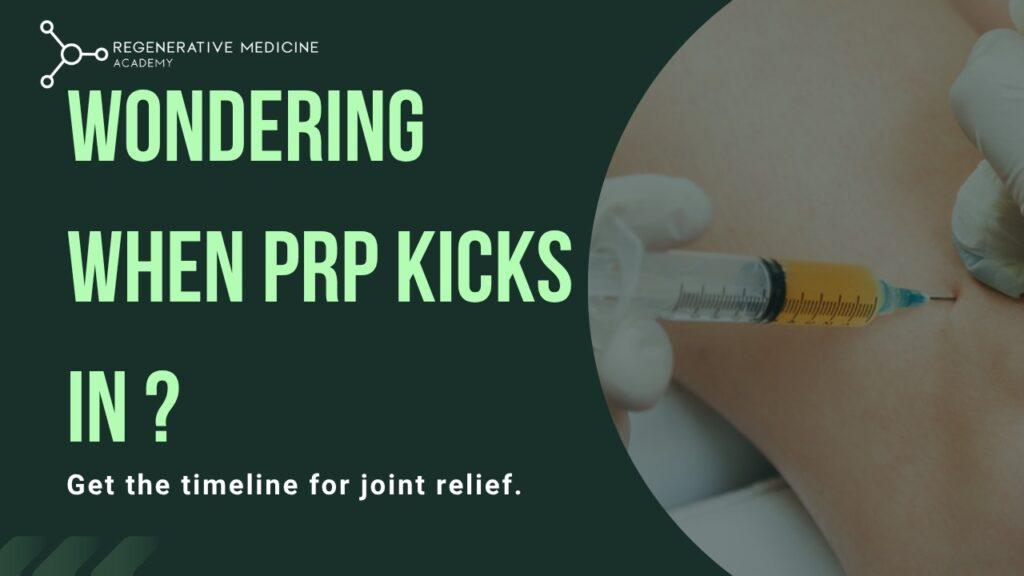PRP vs. Stem Cell Injections: What Future Regenerative Clinicians Should Know
Feeling Overwhelmed by Treatment Options?
As a student or trainee in regenerative medicine, you’re eager to master cutting-edge therapies—but you’re also faced with a crowded landscape. From conferences to journal clubs, everyone’s talking about innovative approaches. Two of the most talked-about are PRP and stem cell injections. Deciding between prp vs stem cell injections raises important questions:
- Which approach delivers faster patient recovery?
- How steep is the learning curve for each?
- What regulations govern their use?
If you’re asking these same questions, you’re in the right place. This guide breaks down the science, clinical uses, training paths, and legal landscape that every aspiring regenerative clinician needs to understand.
Why Comparing PRP vs Stem Cell Injections Matters
Both therapies harness the body’s repair mechanisms, but they do so in very different ways. Understanding prp vs stem cell injections helps you:
- Choose the right protocol for specific indications
- Anticipate training and equipment needs
- Advise patients with clarity and confidence
A solid comparison at the outset will save you time—and ensure you deliver safe, effective care as you build your practice.
Scientific Differences: How Do PRP and Stem Cells Work?
Platelet-Rich Plasma (PRP)
- Composition: Concentrated platelets derived from the patient’s own whole blood
- Mechanism: Platelets release a cascade of healing signals (growth factors and cytokines) when activated
- Use: Stimulates tissue repair, angiogenesis, and collagen production in damaged or aging tissues
Stem Cell Injections
- Composition: Autologous or allogenic stem cells, often harvested from bone marrow or adipose tissue
- Mechanism: Stem cells can differentiate into specific tissue types and modulate inflammation by releasing signaling molecules
- Use: Promotes long-term structural healing through cellular regeneration
So, in simple terms: PRP tells your body to heal faster, while stem cells may replace or rebuild tissue over time.
Clinical Differences: PRP vs Stem Cell Injections in Practice
When choosing between prp therapy vs stem cell therapy, consider:
| Factor | PRP | Stem Cell Therapy |
| Speed of Preparation | 10–20 minutes | 1–3 hours or longer |
| Procedure Complexity | Simple injection | May require liposuction or marrow aspiration |
| Recovery Time | Minimal | Depends on harvesting site |
| Patient Downtime | Usually none | Some discomfort or soreness possible |
| Cost to Clinic/Patient | Lower | Higher due to equipment and processing |
| FDA Regulation | Minimal manipulation allowed | Often under strict IND requirements |
Knowing these distinctions helps future clinicians decide what’s practical, ethical, and effective in their treatment planning.
Real-World Use Cases: When to Choose One Over the Other
Orthopedics
- PRP is frequently used for mild-to-moderate osteoarthritis, tendonitis, and ligament sprains.
- Stem Cell Injections show promise in cartilage regeneration for advanced osteoarthritis and larger joint damage.
Sports Injuries
- PRP offers a quick turnaround, making it ideal for athletes with tight schedules.
- Stem Cells may be useful in more chronic or degenerative cases where structural regeneration is necessary.
Hair Restoration & Facial Aesthetics
- PRP is the go-to option for hair loss (androgenic alopecia) and facial rejuvenation due to its safety, ease of use, and visible results.
- Stem Cell Therapies are still in experimental phases for these indications but may provide more long-term changes once research supports their efficacy.
Wound Healing & Diabetic Ulcers
Emerging research shows that combining both therapies may yield synergistic results—another reason to understand the distinction between prp vs stem cell injections before entering clinical practice.
What the Research Says
- A 2021 meta-analysis published in The American Journal of Sports Medicine found that PRP injections significantly reduced pain in knee osteoarthritis at 6 and 12 months compared to placebo.
- A separate 2022 study in Stem Cells International reviewed over 50 trials on mesenchymal stem cells for orthopedic repair, reporting improvements in cartilage density and joint space preservation.
While both therapies show benefits, PRP currently has more high-quality human trials backing its use for specific conditions.
What Is the Regulatory Outlook?
PRP
- Considered “minimally manipulated” when prepared and used in a single patient on the same day.
- Does not require FDA approval if used under the practice of medicine regulations.
Stem Cells
- Subject to stricter FDA oversight, especially if cells are expanded, cultured, or used for non-homologous purposes.
- Use of adipose-derived stromal vascular fraction (SVF) remains a controversial and highly regulated area.
Understanding the difference in compliance between PRP vs stem cell injections is vital. Failing to meet FDA standards can expose you and your practice to legal risks.
Training and Certification Pathways
As a regenerative medicine student, you’ll need hands-on training in both therapies. Look for programs that offer:
- PRP Training Courses focused on preparation protocols, injection techniques, and post-treatment care
- Stem Cell Courses that cover harvesting methods, lab handling (if applicable), and image-guided delivery techniques
- Clear guidance on regulatory considerations, informed consent, and clinical documentation
Don’t assume one training fits all. PRP is often included in weekend workshops, while stem cell education may involve more advanced or university-affiliated coursework.
Which Is Better: PRP or Stem Cell Therapy?
This is a common question—which is better prp or stem cell therapy? The answer depends on several variables:
- For early-career clinicians, PRP is easier to implement with less overhead and a faster path to competency.
- For patients with advanced or degenerative conditions, stem cell therapy may offer potential advantages—though the evidence base is still growing.
- From a legal and business perspective, PRP carries fewer risks and is more widely accepted by insurers and regulators.
Instead of thinking in binary terms, consider how both fit into a tiered treatment strategy—starting with PRP and progressing to stem cell therapy when needed.
Combining Therapies: The Future of Regenerative Protocols?
Some clinicians are beginning to combine PRP and stem cells for synergistic effects. This “biologic stacking” approach is being researched for orthopedic, aesthetic, and wound care uses.
While combining both therapies isn’t always necessary, learning how they complement each other will make you a more well-rounded regenerative provider.
Final Thoughts for Future Regenerative Clinicians
The debate between prp vs stem cell injections isn’t about which one is universally better—it’s about:
- Patient needs and safety
- Available resources and infrastructure
- Your current level of training and regulatory readiness
The smartest path forward? Start with comprehensive PRP training, then expand into stem cell techniques as you build experience and infrastructure.
Want to Master Both Therapies—Confidently?
At Regenerative Medicine Academy, we prepare clinicians for real-world success with:
✅ Certified PRP and stem cell training courses
✅ Hands-on technique labs with expert instructors
✅ Legal, clinical, and business readiness modules
✅ Continuing education credits and post-course mentorship👉 Enroll now and start your journey from student to confident regenerative provider.
Visit Regenerative Medicine Academy to view our upcoming courses and reserve your seat today.



